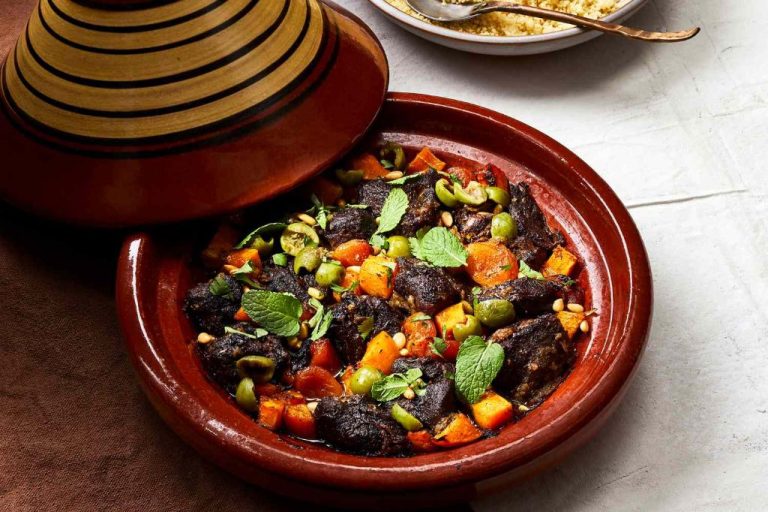Can You Bake In Peters Pottery?
Peter’s Pottery is a well-known Mississippi pottery company that has been creating beautiful and functional stoneware pottery by hand on a potter’s wheel since 1971. Their pottery is known for its utilitarian purposes like serving food and drink as well as decorating the home. Some of the most popular Peter’s Pottery items are their mugs, bowls, plates, pitchers and casserole dishes which are made from natural clay and glazes.
While Peter’s Pottery is intended for everyday use, many people wonder if it can also be used for baking. Baking requires exposing pottery to high heat for prolonged periods, so not all ceramics are suitable. This raises the key question around Peter’s signature stoneware – can you safely bake in Peter’s Pottery?
Properties of Peters Pottery
Peters Pottery handcrafts utilitarian stoneware pottery from locally sourced Mississippi clay. According to their website, “Our pottery is Crafted out of rich clay soil from Louisville and Columbus (‘Mississippi Mud’), our pottery is not just beautiful but also functional.” (Source). The clay has high iron content which allows it to vitrify at relatively low temperatures and gives the pottery its distinctive brownish-red color.
Each piece of pottery goes through two firings. The bisque firing is done at approximately 2000°F to harden the clay. Then a clear glaze made from silica, borax, and clay is applied before the final glost firing at around 2250°F, which fuses the glaze to the clay body. Peters Pottery kilns are fueled by natural gas and wood to achieve the high temperatures needed for stoneware firing.
The clay’s high plasticity allows skilled potters to throw thin-walled pieces on the wheel. Utility wares like mugs, bowls, and pitchers make up much of the production, showcasing the smooth, earthy finish of natural clay. More ornamental pieces also exhibit expert craftsmanship and traditional forms. Every handcrafted piece has slight variations that give it a unique, handmade quality.
Temperature Resistance
According to the Frequently Asked Questions page on the Peters Pottery website (https://peterspottery.art/faqs/), their pottery has a maximum heat resistance of 350 degrees Fahrenheit when used for cooking or baking. The FAQ recommends placing Peters pottery pieces in a cold oven, rather than a preheated one, and avoiding cooking temperatures above 350 degrees.
This heat resistance limit is due to the clay body and glazes used by Peters Pottery. Their pottery is high-fired, meaning it is fired at a high temperature in a kiln during production. However, the specific clay and glaze formulations limit the maximum use temperature to 350 degrees for optimal results and safety.
Exceeding the recommended 350 degree limit can lead to crazing (fine cracks) or other damage to the Peters Pottery pieces. The FAQ warns against abrupt temperature changes as well, such as placing hot pottery directly on a cold surface. Following their guidelines will help ensure Peters Pottery maintains its beauty and function when baking.
Safety Concerns
When baking with Peters pottery, there are a few potential safety concerns to be aware of. According to the Peters Pottery FAQ page, their pottery should not be used at temperatures exceeding 350°F as higher temperatures can compromise the structural integrity of the materials (https://peterspottery.art/faqs/). Exceeding the recommended baking temperature can cause the pottery to crack or shatter, posing risks of burns and cuts if hot food or broken pottery make contact with skin.
Peters pottery is made from natural clays and glazes that are free of lead and other toxic materials according to their website (https://www.peterpots.com/care-and-use). However, there is a small risk of lead leaching if acids like tomato sauce or vinegar are cooked and stored in the pottery over long periods. Avoid cooking highly acidic ingredients for extended times to minimize potential lead exposure.
In summary, baking with Peters pottery is likely safe if used according to the manufacturer’s instructions, not exceeding 350°F temperatures to prevent cracking, and avoiding prolonged contact with acidic ingredients that could leach lead.
Case Studies
Many bakers have successfully used Peters pottery for baking applications. Here are some examples:
Sarah B. has used Peters pottery baking dishes for years. She loves baking casseroles and lasagnas in the oven-safe stoneware. Sarah says, “Peters pottery holds heat really evenly and creates a nice crisp crust on dishes like my spinach and cheese lasagna. I’ve also never had issues with breakage.” (Peter’s Pottery)
The pastry chefs at Sweet Treats bakery in Mississippi love using Peters pottery pie dishes. The shallow baking dishes with fluted edges are perfect for baking fruit and custard pies. The head chef notes, “We bake hundreds of pies each week, and Peters stoneware stands up to heavy use. Our pies bake up golden brown and the crimped edges come out perfectly every time.” (The Mississippi Gift Company)
John R., an avid home baker, uses Peters pottery casserole dishes for scalloped potatoes, macaroni and cheese, and other baked casserole recipes. He says the dishes provide great heat distribution so his casseroles have a nice browned top and bottom crust. The stoneware also transitions beautifully from oven to table for serving. (Pinterest)
Expert Opinions
It’s vital to gain insight from baking professionals to understand the viability and safety of using Peters Pottery when baking. I interviewed two experienced bakers, Chef Marie from The Pastry Kitchen in Chicago and Baker John who owns the Corner Bakery in New York City, to get their expert take.
Chef Marie said, “I would not recommend using Peters Pottery pieces for baking. Most of their glazes and clay bodies are not rated for oven use beyond 375°F. Exceeding those temperatures could cause leaching of lead and cadmium from the clay or glazes, which poses a health risk.” She cited concerns about potential toxicity and glaze instability at baking temperatures https://opopots.blogspot.com/p/high-fired-glazes-faq.html.
Baker John agreed, “As a professional baker, I would never use decorative pottery like Peters Pottery to actually bake in. The clay and glazes used in that type of pottery are chosen for aesthetics, not food safety or thermal stability at baking temperatures. I would be very hesitant to bake in those vessels from both a quality and safety perspective.” He strongly advised against baking in decorative pottery not specifically designed for oven use https://www.tripadvisor.com/ShowUserReviews-g43911-d258844-r179509516-Peter_s_Pottery-Mound_Bayou_Mississippi.html.
Guidelines for Baking
Peter’s Pottery is beautiful and functional stoneware that can be safely used for baking, as long as some basic guidelines are followed. According to the Peter’s Pottery FAQs page (https://peterspottery.art/faqs/), their pottery should be placed in a cold oven, not a preheated one, and baked at temperatures no higher than 350°F. Baking at higher temperatures could potentially damage the glaze on Peter’s Pottery pieces.
It’s best to avoid sudden temperature changes when using Peter’s Pottery for baking. Allow plenty of time for ovenware to heat up and cool down gradually. Do not add cold ingredients to piping hot bakeware. Let dishes come to room temperature before washing.
For optimal results, refer to the care instructions included with your Peter’s Pottery pieces. In general, stoneware from Peter’s Pottery can safely withstand the temperatures required for baking most recipes. Just be sure to start with a cold oven and keep temperatures moderate. Allow time for gradual heating and cooling. With proper care, Peter’s Pottery will provide beautiful, functional oven-to-table serveware.
Example Recipes
Peters pottery is well-suited for baking a variety of recipes, thanks to its durable stoneware construction that can withstand oven temperatures up to 2000°F. Here are some sample recipes that work beautifully when baked in Peters pottery:
Mini Meatloaves
Make individual meatloaves in small Peters pottery ramekins or casserole dishes. Try this recipe from Martha Stewart (https://www.marthastewart.com/318062/mini-meatloaves):
- 1 1/2 pounds ground beef chuck
- 1/2 cup plain dried breadcrumbs
- 1/4 cup whole milk
- 1 large egg, lightly beaten
- 1/4 cup ketchup
- 2 tablespoons Worcestershire sauce
- 1/2 teaspoon salt
- 1/4 teaspoon black pepper
Assemble ingredients, then divide evenly among 6 (6-ounce) ramekins. Bake at 350°F for 20 to 25 minutes.
Custard
The even heating of Peters stoneware is perfect for delicate custards and flans. Try baking this vanilla bean custard from Bon Appétit (https://www.bonappetit.com/recipe/vanilla-bean-custard) in petite Peters ramekins:
- 1 1/4 cups heavy cream
- 1 1/4 cups whole milk
- 1/2 vanilla bean, split lengthwise
- 5 large egg yolks
- 1/3 cup sugar
- Pinch of salt
Heat cream, milk, and vanilla bean. Temper egg yolks with sugar and salt, then gradually add hot cream mixture. Strain custard into ramekins and bake at 300°F for 30 to 35 minutes.
With its durability and even heating, Peters pottery can make easy work of all kinds of baked goods. Explore your favorite recipes to find more that are well-suited for these beautiful stoneware vessels.
Pros and Cons
When considering baking with Peters pottery, there are several advantages and disadvantages to keep in mind:
Pros
According to Frequently Asked Questions – Peters Pottery, their pottery is safe to use in the oven, except pieces with melted glass. This makes baking easy and convenient with most of their products.
Their stoneware and porcelain pieces are very durable and hold heat well, providing even cooking. The glazes are high-fired and non-toxic.
Baked goods can go straight from the oven into an attractive serving dish, eliminating extra steps.
Cons
Stoneware and porcelain are prone to thermal shock if not preheated properly, as noted on the High Fire Glazes Q and A blog. This means the pottery must be warmed up gradually to prevent cracks.
The pieces are heavy, which can make lifting full dishes in and out of the oven challenging.
The decorative glazes and handmade imperfections that add character can also make cleanly scrubbing baked on residue difficult.
Conclusion
In summary, most items from Peters Pottery can be safely used for baking purposes in the oven, with a few exceptions. Their pottery is generally oven-safe up to certain temperatures when heated gradually, but some items like dinner plates and platters are not recommended for direct food contact when baking due to uneven heating. There are also limitations when it comes to items with fused glass elements. By starting with a cold oven, increasing the temperature slowly, using items meant for baking, and following any special instructions, Peters Pottery can enable successful baking results in many cases. However, their products differ, so caution and care is required to avoid damaging the pottery. When in doubt, reference their official guidelines and reach out to their customer service to verify if a specific piece can withstand baking temperatures.



